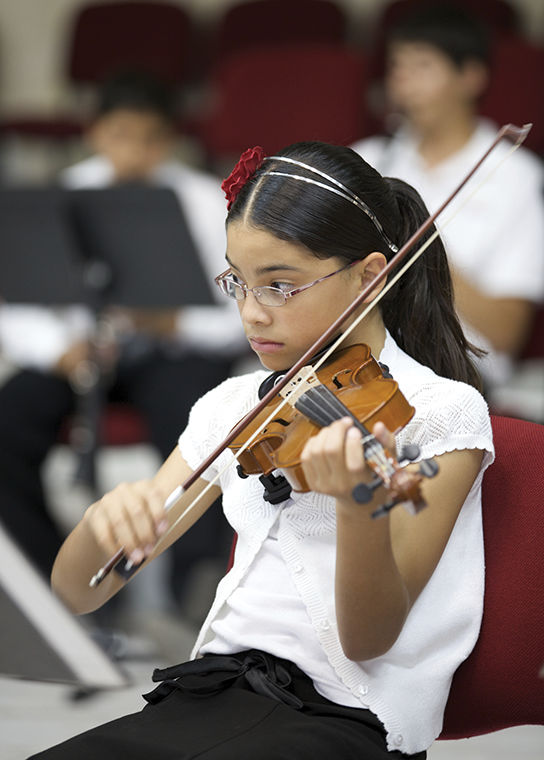Lincoln Park High School welcomes music donations, CPS budget cuts still sting
According to a 2014 survey by Raise Your Hand Illinois, a coalition of parents who advocate for better public education, 65 percent of Chicago Public Schools do not meet the recommended two hours of arts education per week.
May 9, 2016
A private donation of materials from the NIB Foundation—formerly the classical music radio station WNIB-FM 97.1—has invigorated the music program at Lincoln Park High School, 2001 N. Orchard St., but staff and parents agree more public funding is needed to keep the program afloat.
The donated materials include approximately 18,000 CDs, 5,000 LPs and an assortment of musical encyclopedias and reference texts, according to Lise Gilly, chair of the Performing Arts Department at LPHS.
According to Gilly, the recordings include performances by the Chicago Symphony Orchestra, as well as work by little-known soloists and opera performances.
“It’s like a little 20-by-20 square of a true university conservatory library,” she said. “We’re happy to house it, and I’m honored to be the curator of the library.”
WNIB-FM was on the air in Chicago from 1955 until it was sold for $165 million in 2000, according to a Nov. 30, 2000, Chicago Tribune article.
“A lot of these pieces are not played often on the radio anymore or even able to be found on YouTube,” Gilly said. “If the kids can increase their understanding by listening, studying and analyzing these recordings, it’s invariably going to boost their performance level and their sensitivity to the music.”
While LPHS has been grateful for the donation, Amy Rasmussen, executive director at Chicago Arts Partnership in Education, an organization dedicated to promoting arts-integrated education, warned against over-reliance on private donations for arts programs at Chicago Public Schools.
“It’s great when things get donated, but private support is not consistent enough to cover the qualified art teachers that [we] need in schools,” she said. “It’s like a Band-Aid on a gaping wound.”
Steven Faso, whose son, Drake, is a senior at LPHS, helped spearhead the NIB Foundation’s donation with his wife, Kelly, the former president of LPHS’ band and orchestra parent association. He echoed similar sentiments.
Parents of LPHS students have had to shoulder many expenses that would previously have been covered by the school’s budget, Steven Faso said, noting administrative fees parents are charged for their children’s participation in the program have risen in recent years, though many of the instruments students play are 20–30 years old.
“There’s never enough money for the arts,” Steven Faso said. “We would like the program to be giving the kids more opportunities and support them with better instruments.”
Kelly Faso added that fees for transportation and clean band uniforms have also fallen onto parents. To supplement the program’s finances, a collection plate is passed around at band and orchestra concerts, she said.
While the 2012 Chicago Public Schools’ Arts Education Plan recommends 120 minutes or more of weekly arts instruction and a ratio of one art teacher for every 350 students, no central policy exists in the city requiring that those criteria be followed, and overall budget constraints often force individual schools to make compromises, according to Rasmussen.
“They put principals in a pickle when [they have to] choose between taking away a classroom teacher, a librarian, a gym teacher, or an art or music teacher,” Rasmussen said. “They’re all terrible choices.”
Gilly added that no art or music teachers have been cut from LPHS, but many of her colleagues who work at other CPS schools will have positions cut.
Art programs are often one of the first targets of budget cuts, but a 2009 study by the Arts Education Partnership found that high school students who were exposed to substantial arts programs had a 15 percent higher chance to attend a four-year post-secondary institution, and had a 20 percent higher chance of pursuing a BA at 20.
“These are key things that help these kids become fabulous students,” Kelly Faso said. “It’s as instrumental as their math and science background for their academic proficiency.”








